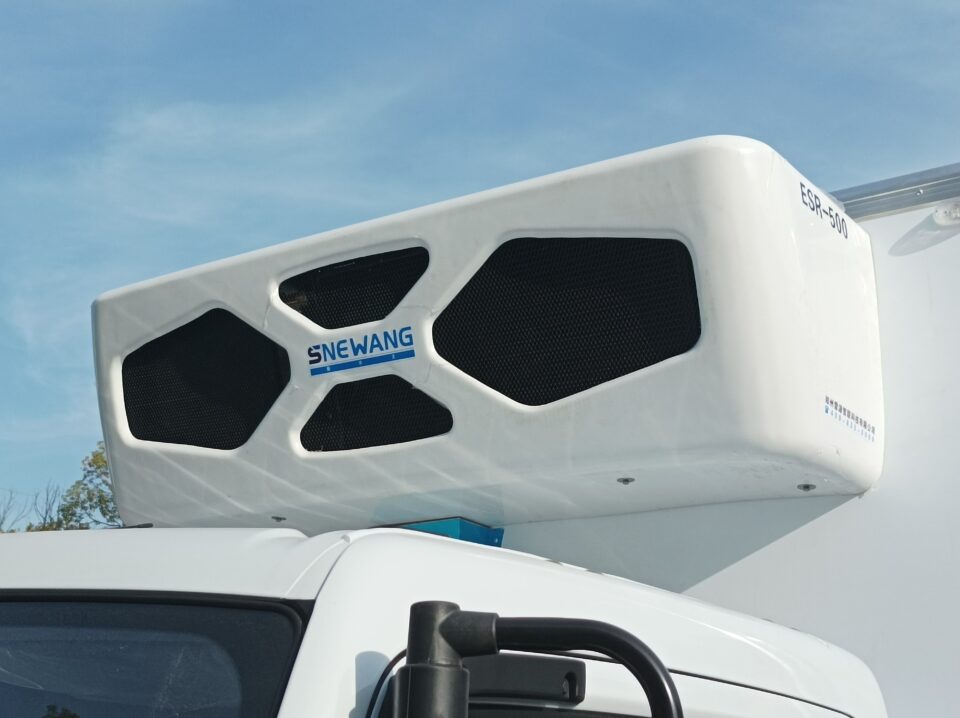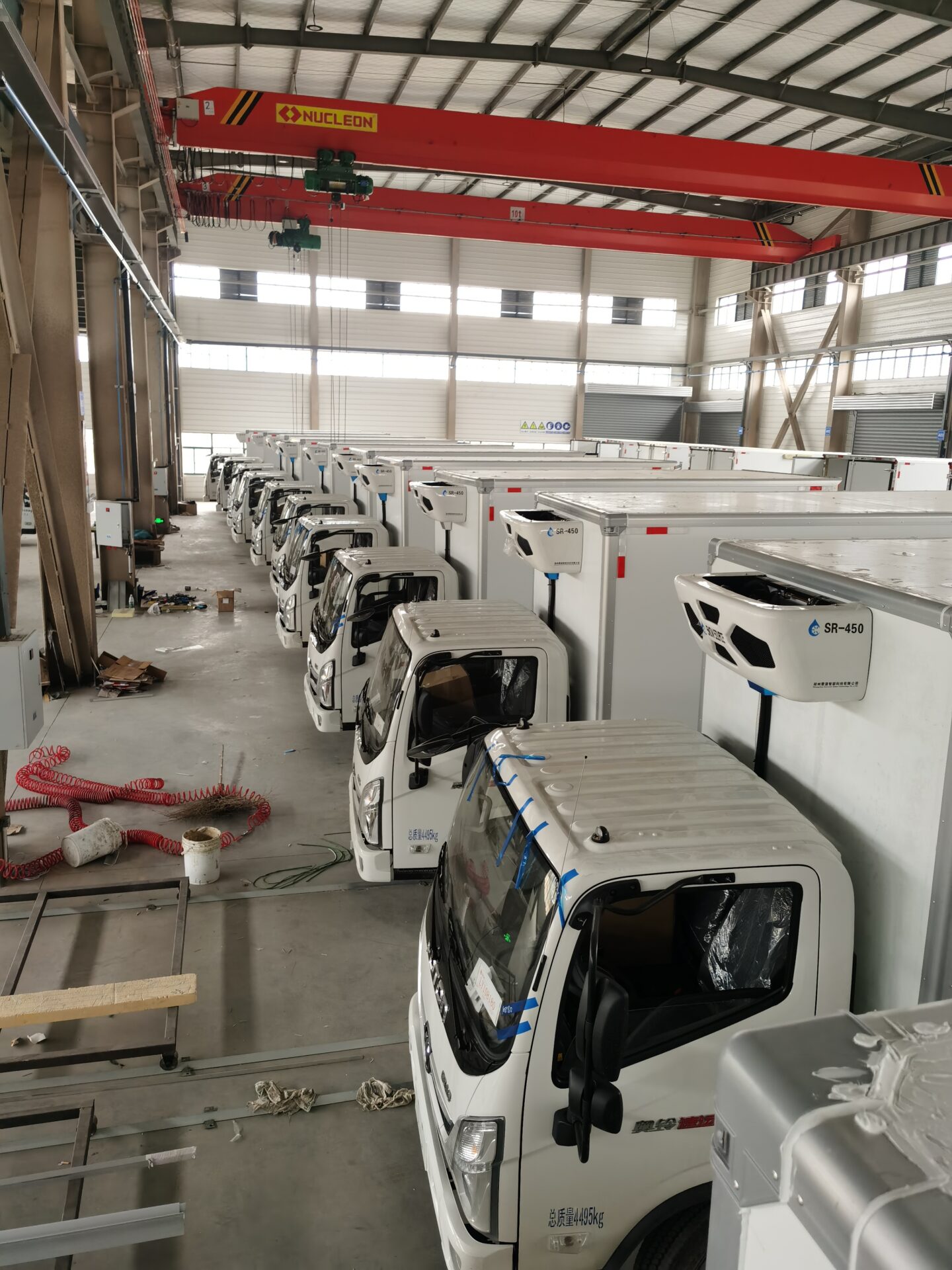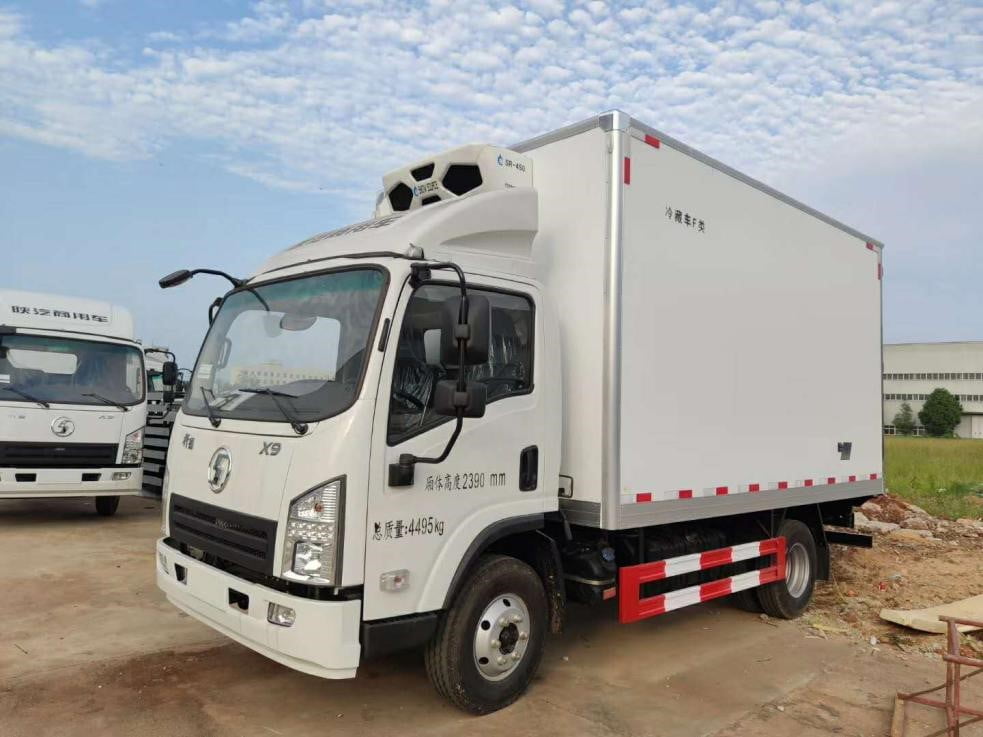To improve the refrigeration efficiency of electric transport refrigeration technology, we can start from the following aspects:
First. Optimize the design of the refrigeration system:
- Select high-efficiency refrigeration components:
(1) The compressor is the core component of the refrigeration system. It is very important to select an electric compressor with high efficiency and low energy consumption. For example, the new variable frequency compressor used by Snewang can automatically adjust the speed according to the actual refrigeration demand. It can reduce energy consumption when the load is low. This improves the overall energy efficiency.
(2) The heat exchange efficiency of the condenser and evaporator also directly affects the refrigeration effect. The use of high-quality heat exchange materials can improve the heat exchange efficiency of the condenser and evaporator. Increasing the heat exchange area can also help. Optimizing the heat exchange structure is another way to improve efficiency. For example, Snewang’s pure electric refrigeration unit uses a microchannel heat exchanger. It has a higher heat transfer coefficient and a smaller volume. This can effectively improve the performance of the refrigeration system.
(3) The selection and adjustment of the expansion valve are also crucial to the operation of the refrigeration system. A suitable expansion valve can accurately control the flow of the refrigerant. This ensures that the refrigeration system operates in the best condition. Snewang refrigeration units give priority to the use of electronic expansion valves. These valves are more precise in control.
- Reasonable design of refrigeration system layout:
(1) Try to shorten the flow distance of refrigerant in the pipeline. This can reduce the resistance loss of the pipeline. Reasonably plan the positions of components such as compressor, condenser, evaporator and expansion valve. This makes the flow path of refrigerant smoother. Snewang refrigeration unit has a compact internal structure layout. They are trying to achieve the best performance.
(2) Avoid parts with large local resistance such as elbows and joints in the refrigeration system. This can reduce unnecessary pressure loss. At the same time, ensure that the connection of the pipeline is tight. This prevents refrigerant leakage.

Second. Improve the thermal insulation performance of the vehicle:
- Select high-quality thermal insulation materials: The compartment of electric transport vehicles requires good thermal insulation performance. This reduces the input of external heat. Use thermal insulation materials with low thermal conductivity and good thermal insulation performance. Examples include polyurethane foam and glass fiber. Use these to insulate the compartment. Ensure that the thickness and density of the thermal insulation material meet the requirements. This achieves the best thermal insulation effect.
- Strengthen the sealing performance of the compartment: Good sealing can prevent air infiltration. It also reduces heat transfer. Seal the doors, windows, gaps and other parts of the car. Use high-quality sealing strips, sealing gaskets and other materials. This ensures the sealing of the car.
Third. Strengthen system maintenance and management:
- Regular maintenance of refrigeration equipment: Regularly inspect, clean and maintain refrigeration equipment. This includes compressors, condensers, evaporators, expansion valves, etc. This ensures their normal operation. Replace worn parts promptly. Clean dirt and impurities in time. These actions maintain the good performance of refrigeration equipment.
- Monitor and optimize system operating parameters: Install sensors and monitoring equipment. Use these to monitor the operating parameters of the refrigeration system in real time. This includes temperature, pressure, current, etc. According to the monitoring data, adjust the operating parameters of the refrigeration system in time. This makes it operate in the best state. For example, according to the actual temperature in the car, automatically adjust the speed and cooling capacity of the compressor. This improves the refrigeration efficiency.



